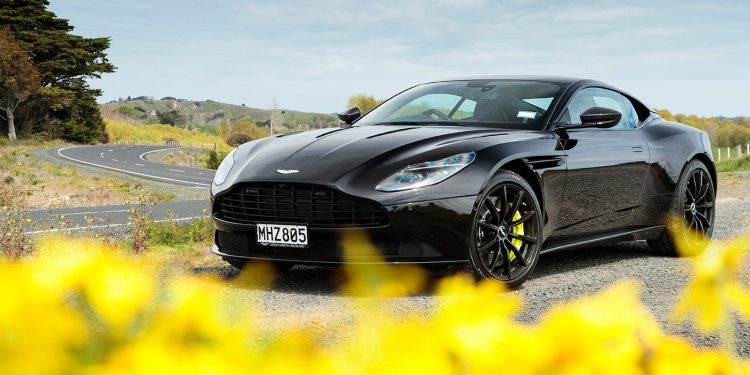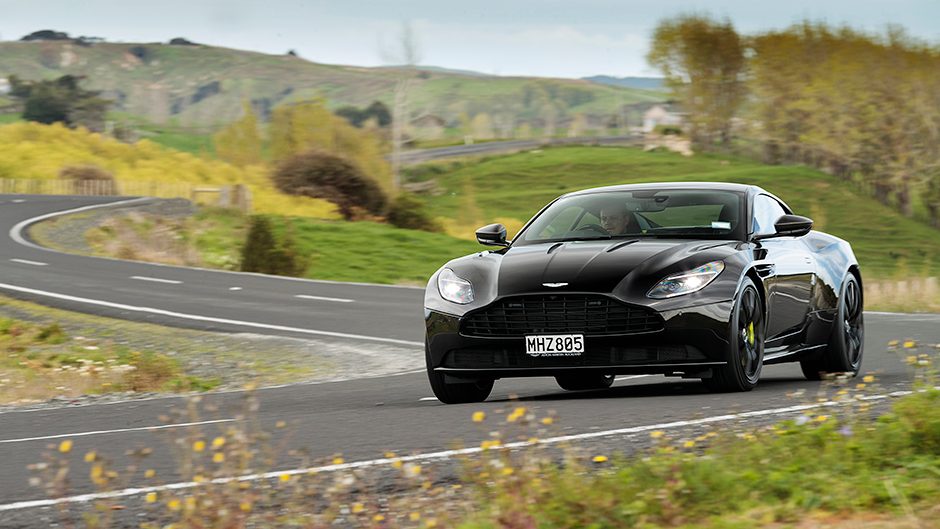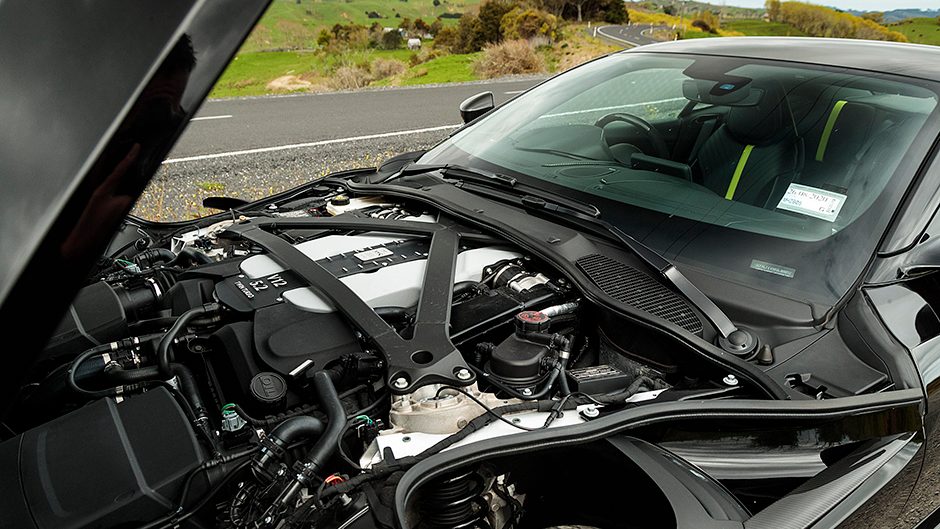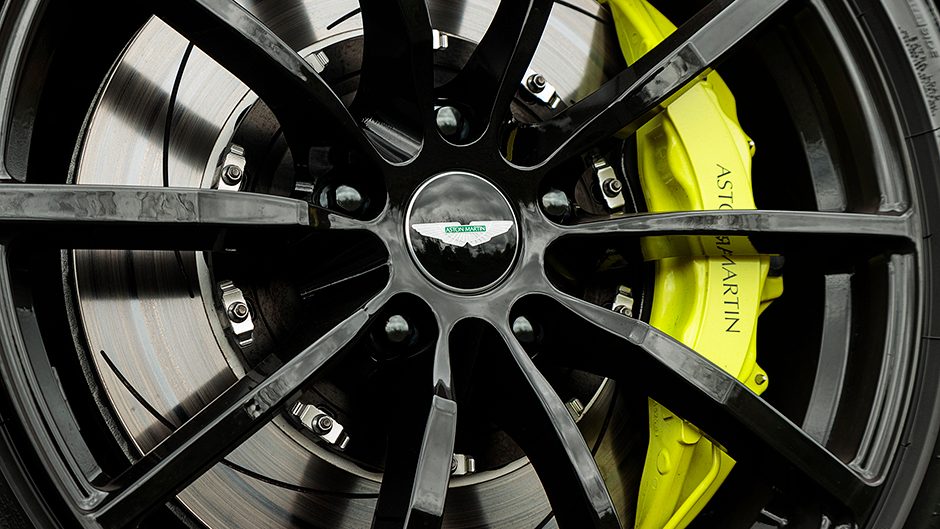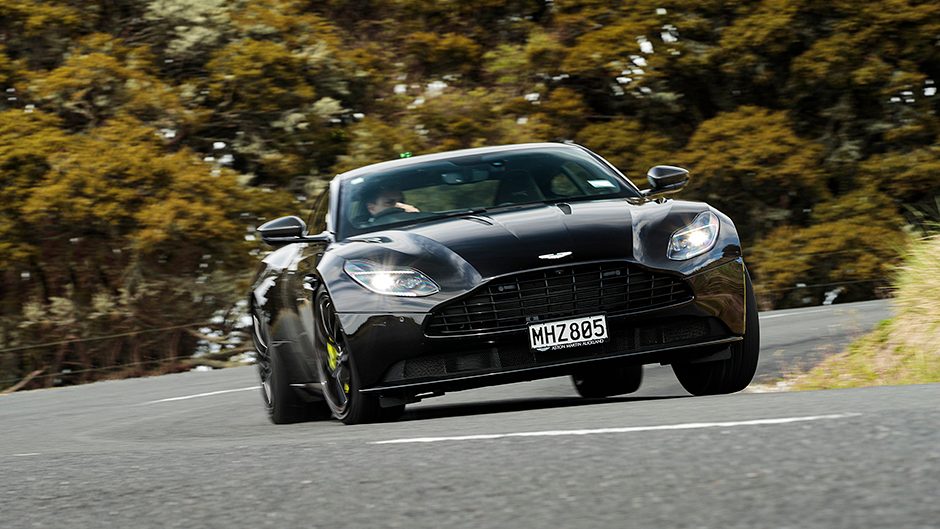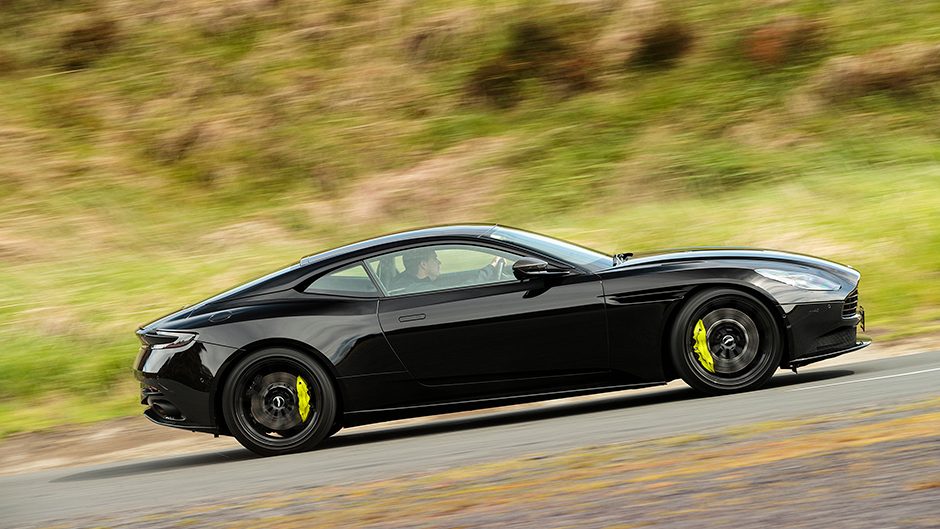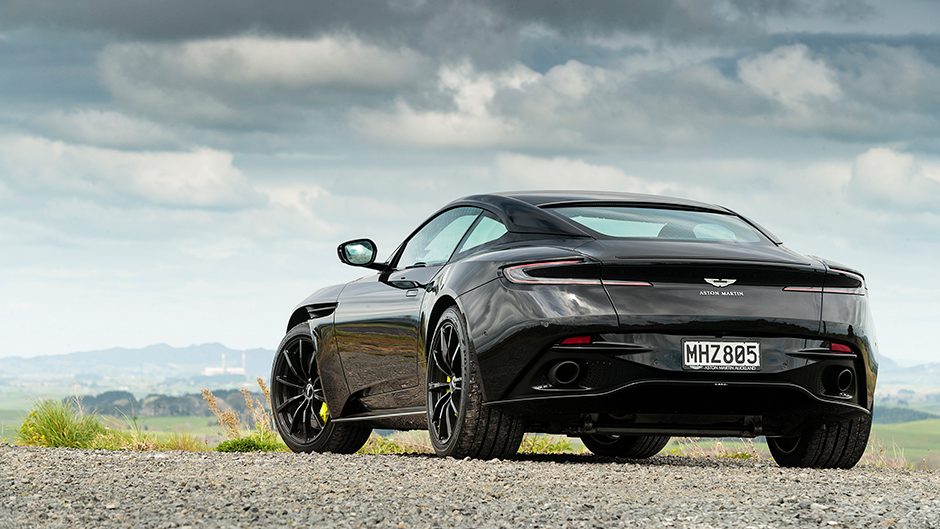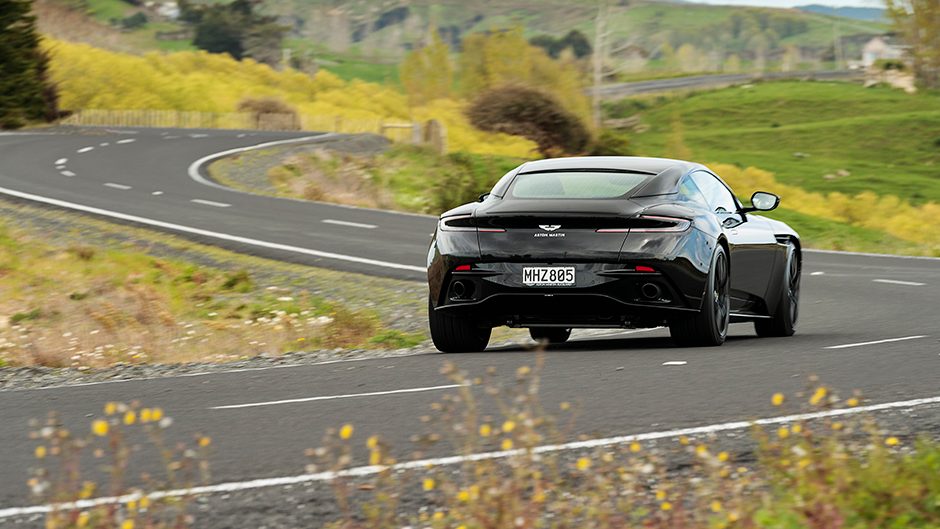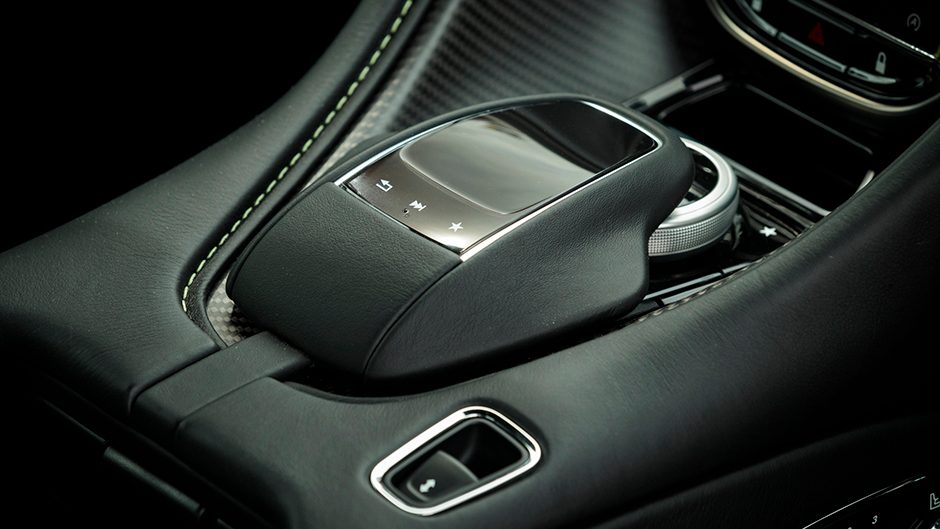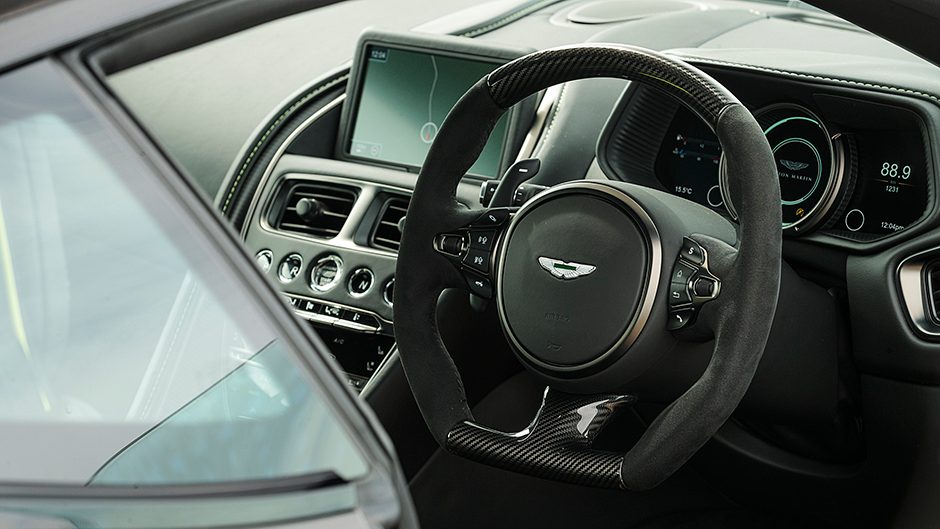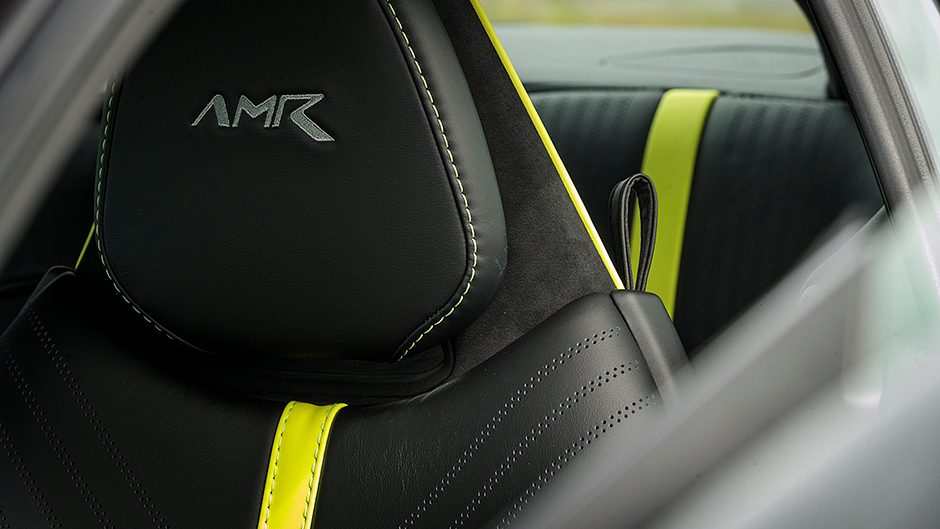2019 Aston Martin DB11 AMR review
Words Kyle Cassidy | Photos Tom Gasnier
Aston Martin’s DB11 has been given the AMR treatment, imbuing the v12-powered GT with a racier chassis and more horses. So is this the best DB11 recipe yet?
Aston Martin’s evolution of the DB11 has seen its prime GT handed over to the firm’s racing division to, er, make it a bit racier. When we first drove the DB11 a few years back, the emphasis was on Grand Touring, the big blown V12 gave it effortless stonk but it lived in a chassis tuned for Continental cruising. It was a lovely GT, but it had more sport to give. Then Aston gave us the DB11 V8. It didn’t have quite the chugger-chug under the bonnet but with tweaked suspension bits to capitalise on the litheness of the eight, it was better at blasting blacktop. And so we liked it all the more. So what’s an AMR version of the DB11 then?
It uses the chassis of the V8 but they’ve thrown the V12 back at it, and one with a bit more power. This can only be good, right? Well Aston thinks so, as you can no longer get the DB11 in its original trim, the line-up now consisting of the V8, this AMR and the V12-powered Volante, Aston speak for convertible. And anything that is tuned to drive better, with added power, is always going to hit the spot.
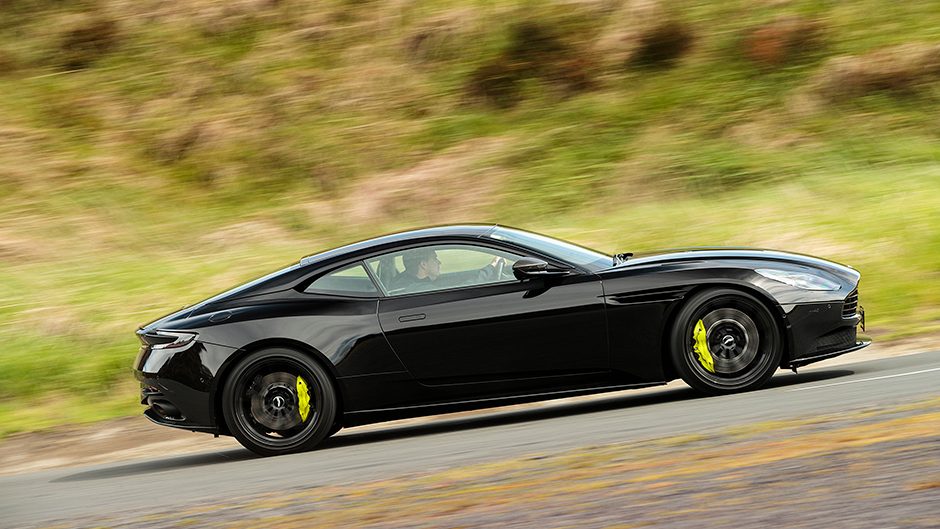
The AMR is still a GT at heart, but just a sportier, pointier one. AMR-ing the DB11 sees the 5.2-litre twin-turbo V12 gain a further 22kW, taking the tally to 447kW, or 630hp, while torque remains ample, with 700Nm on the surge from just 1500rpm. Heralding the excess is a louder exhaust system. The torque convertor eight-speed auto gets a software tweak to deliver snappier changes when the mood suits. The AMR V12 gains the same chassis tweaks as they gave the V8, the purpose of which was to tighten the rear end to help it turn more sharply. Here they have added yet stiffer bushes in the rear and to compensate for the V12’s added excess (in terms of both power and weight), the dampers have been retuned and there is a beefier front roll bar.
They’ve also tarted up the exterior where you’ll find more carbon finery and gloss-black bits. The wheels are forged in the fires of lightness to remove 3.5 kilos of unsprung mass from each corner. Even so, the AMR is still prime British beef, said to weigh 1765kg, though this one tipped in at 1856 kilos. Not that this blunts the performance.
We didn’t match the 0-100km/h of 3.7sec, but we also failed to realise this has a launch control function. And it would have helped, as when we tried, the AMR just wouldn’t launch off the line in any sort of rush. But once moving, it gathers speed in a way that only a big V12 can; effortlessly.
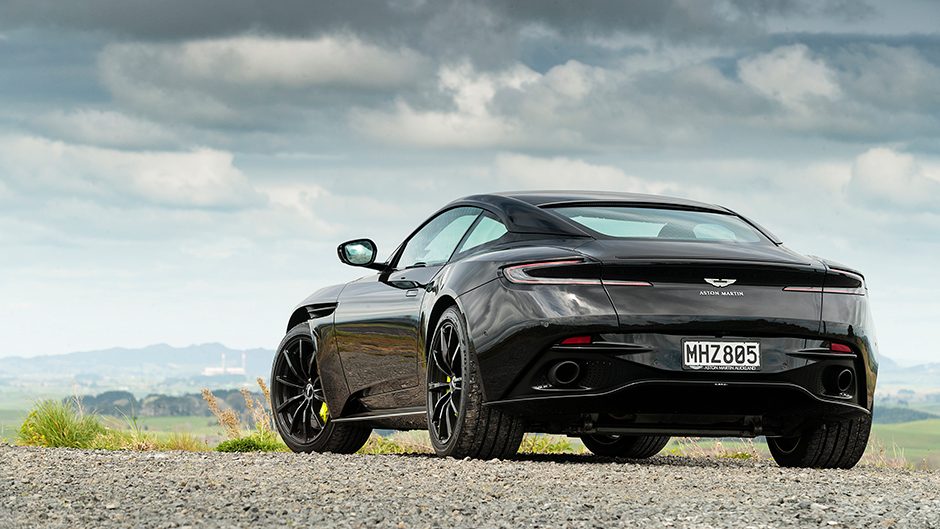
With all 630 horses stampeding, this slays the straights, even though it’s hauling over 1800kg of luxury excess. It’s the breadth of torque that does it, the goodness oozing right throughout the rev range. The power starts to manifest around the 3500rpm mark and just keeps pumping right up to 7000rpm with no let-up from the assault. And it sounds decent too, raspy through the midrange before taking on a more guttural roar as revs peak. Off the throttle there are a few pops and burbles, but also some mechanical whirring, about its only sour note.
Oh, and its passion for premium that would have climate change campaigners super-gluing themselves to the Aston showroom window. But at least they would have something gorgeous to look at while they were stuck there. Black ain’t the best colour to show off the sculpture that is the DB11. You lose the visual drama of the clever air helpers like the curlicues in the front guard and the channel for the air blade below the C-pillar. They, along with the other subtleties of the design, are all lost in the mass of black. Those acid green calipers are something though eh?
The DB11 has three settings for its adaptive suspension, GT being the default. This delivers your everyday comfort, with fine around-town progress, able to blot over the rough spots well. It’s plush on the highway too, while the tyre roar isn’t too bad either. Head down curlier paths and with a push of the steering wheel-mounted button, the suspenders firm a tad to calm the body movements. Further control comes in Sport Plus, which still has enough give in the springs for our lumpy roads. This rides well regardless of the setting, and there’s not much chance of running out of suspension travel either. This is well balanced but you can sense the weight on the go, and when tracking around tighter turns.
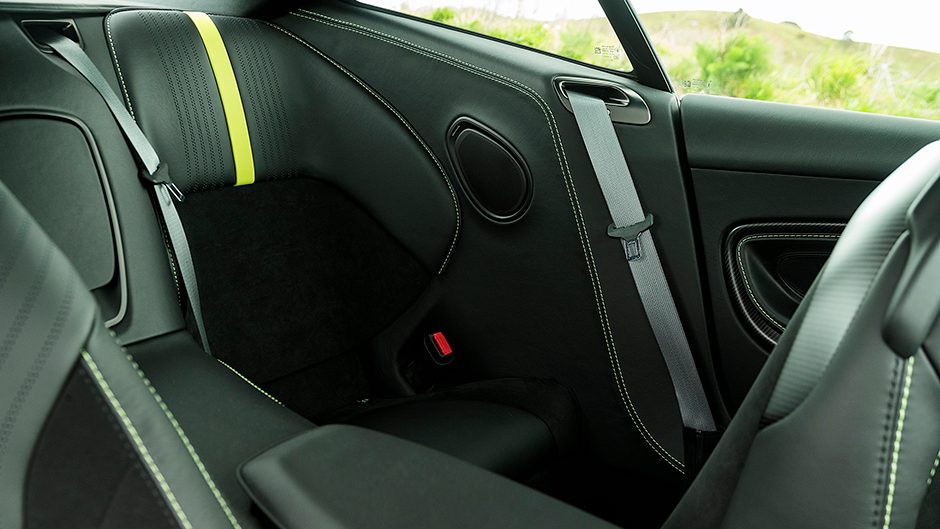
While it tucks itself in well, with the V12 in the nose, this doesn’t turn as tidily as the V8. You can’t hide the fact the eight is 90kg lighter at the front end. And while the steering is well assisted and accurate, it’s not vibrant in terms of feel.
With masses of rubber, grip is fairly assured but the torque can worry the traction control when you’re too eager or encounter a bump on a corner exit. The throttle response is sharp enough in the Sport mode, and the long travel of the pedal helps ease on the power. The brake pedal too has a long travel, so the stoppers initially feel underdone, but you just have to stand on them with more determination. This is when you really get a sense of the weight as it doesn’t shed the speed as easily as it puts it on.
While the auto doesn’t quite nail the ratio selection when left in D, it is quick with the changes when you flap the paddles, both up and down and it’s otherwise a good gearbox for this type of car. Though low slung, it’s not hard to get onboard; no obstructive sill or uncompromising seats to negotiate your way past, and once in, the cabin is a genuinely fine place to be.
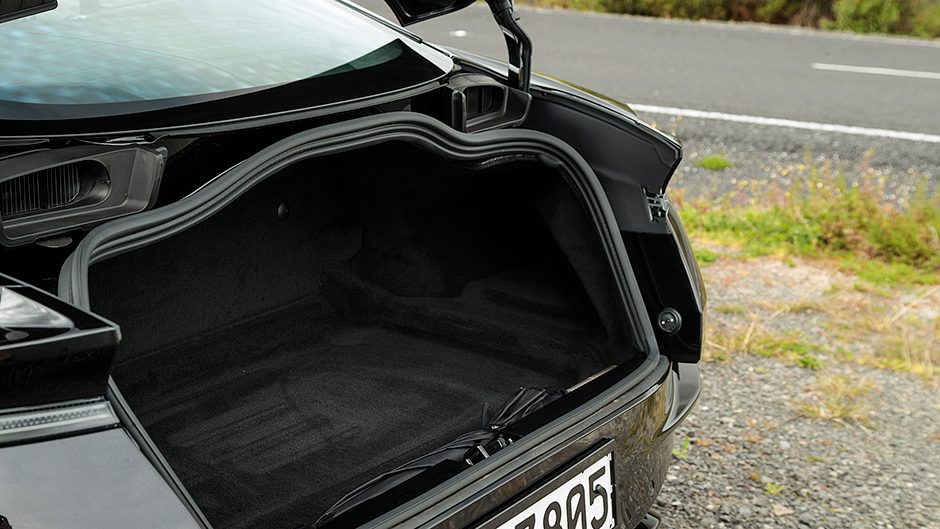
This is literally lined in leather, carbon or alloy from the tops of the door sills to the headlining, plastic bits being scarce. And it’s all put together more convincingly than ever. On board conveniences are limited to items like a smart key and a surround view camera while active driving aids aren’t even optional.
While Aston’s haptic touch controls on the dash still look trick, the infotainment system, borrowed from Merc, has already been superseded. Still, it works well enough, even without the fancy voice activation. While the push button gear selector on the dash isn’t that practical in operation, the main dials are clear and concise, the trip computer easy to fathom.
The seats are comfortable too, ventilated even, and motor out of the way quickly when someone wants to climb in the back. These plus-two seats are good only for the younger kids, who fit fine, or can be used as well lined storage holes. The boot is a handy size, certainly big enough for a few Louis Vouitton Keepalls.
Although the turning circle is about the same as a ute, the ground clearance and outward vision are okay. And that means this is a 630hp super coupe you could use daily. We probably still prefer the V8, but that the V12 is now sportier, but still a fine super GT, means it’s a better fit for its brief.
| Model | Aston Martin DB11 AMR | Price | $355,000 |
| Engine | 0000cc, V12, 447kW/700Nm | Drivetrain | 8-speed auto, RWD |
| Fuel Use | 11.4L/100km | C02 Output | 265g/km |
| 0-100km/h | 4.18 sec | Weight | 1856kg |


